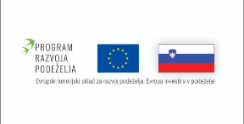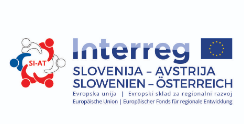About the project
The main objective of the „DaRe to Connect (D2C)“ project is therefore the implementation of the EU Danube Strategy by further transnational development of the connectivity of the Green Belt as backbone of EU Green infrastructure (EU GI) by maintaining and enhancing ecosystems and their services. Nature park Goričko as a associated partner collaborates with the National park Őrség.
The pilot area includes Goričko Nature Park in Slovenia, Őrség National Park and the entire Vas county with 13 Natura 2000 sites in Hungary, encompassing as much as 3798 km². Őrség National Park comprises the Őrség and Vendvidék regions, the unregulated valley of the Rába (the Inner Őrség) and the vicinity of Szentgyörgyvölgy. It encompasses the boundaries of altogether 44 settlements located on nearly 440 km². Őrség is a special hilly area covered by forests and shaped by rivers and brooks, where the waterlogged hollows difficult to climb are surrounded by hills and hollows of pebble ridges. Going eastbound from the west, the hills and chains of hills gradually lose altitude, forming a plateau shape. The landscape is divided by river valleys and the brooks running in them. Goričko (462 km²) in Slovenia has the same geographic structure with similar habitats and species. Grasslands represent an outstanding value in both protected areas due to its numerous rare plant and insect species. Both parks are harbor a very rich butterfly and moth fauna, out of which the Large Blue butterflies are of European importance. Another key butterfly species is the Marsh Fritillary, which retreating in most parts of Europe, but has still some healthy populations in this region. Ancient orchards and hedges surrounded by meadows provide suitable habitats for many rare bird species, like Scops Owl and Woodlark. Oldgrowth forest, though very small in size, are important as bat habitats. Both protected areas have a reasonable population of two endangered species Bechstein’s bat and Western Barbastelle.
Green Belt offers a good opportunity to improve ecological connectivity within the pilot area. As part of our activities we will design ecological corridors between butterfly populations in Slovenia and Hungary. Thereby larger Hungarian Marsh Fritillary populations will strengthen shrinking Slovenian populations. In contrast to butterflies, Scops Owl and Woodlark populations are larger in Goričko. Therefore, potential habitats in Őrség will be improved based on Slovenian examples, so that the national park can serve as a stepping stone towards the northern areas of the pilot area. The already existing Hungarian Ecological Network will be used to connect protected areas along the Green Belt with Natura 2000 sites further away. By intensive field surveys we will identify the most important breeding habitats and migration routes of bat and bird species and further develop the ecological network using this information. Hungarian Ecological Network is an important spatial planning tool consisting of core areas, ecological corridors and buffer zones. Building constructions and infrastructural development is restricted on areas included in the network, so that is helps preserving natural habitats.








